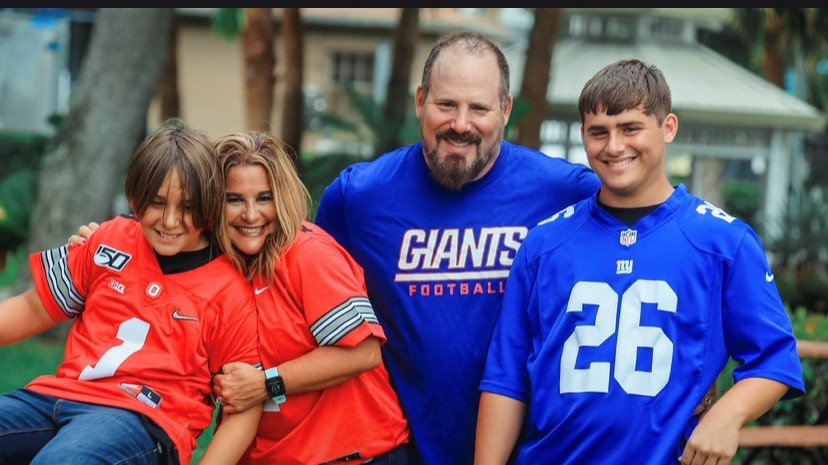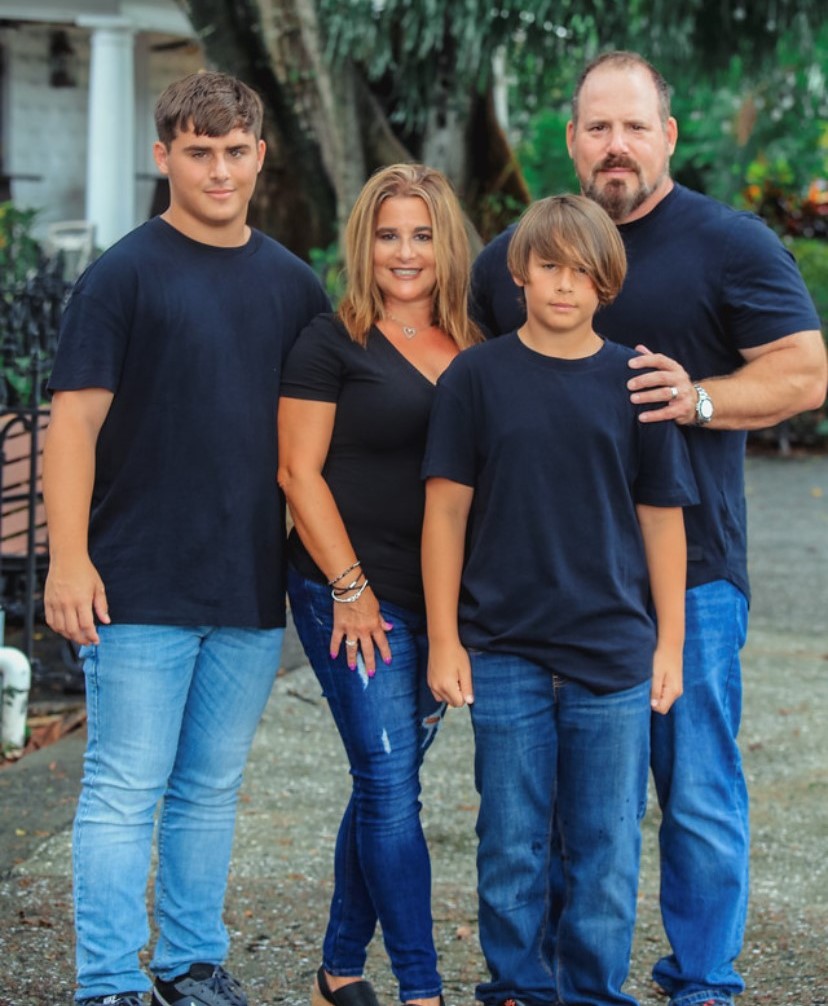Mindy
A Flu Story
Place of Residence: Lake Worth, Florida
As a healthy football mom of two with a busy career and home life, Mindy never imagined that flu would sideline her from the things she loved. Yet in October 2019, at age 47, Mindy found herself hospitalized and fighting to stay alive after being diagnosed with flu and pneumonia. She spent 28 days on life support and underwent intensive rehabilitation, but thankfully survived. Now she wants others to know that even healthy adults can fall victim to flu and associated complications.
Mindy shares the story of how she narrowly survived a life-threatening flu illness.
How would you describe yourself? What are some of your favorite things to do?
I’m an active mom of two boys who play tackle football. I volunteer with both of their teams, which keeps me pretty busy! My husband also runs a football league so we’re constantly doing volunteer work. In my free time, I enjoy exercising, but my favorite thing to do is watch football!

Professionally, I am a speech and language pathologist who works for the Palm Beach County Schools. I service children from age 2 to 22 and my roles include hospital homebound services, district diagnostician, clinical fellowship supervisor, and mentor support.
How did you first become sick and how were you feeling? At what point did you know your illness was serious?
I was sick for two weeks in October 2019 and it progressively got worse. My symptoms included a fever, achiness, and a dry persistent cough. I went to a few different doctors; they tested me for flu and it came back negative. Each time I was treated for my symptoms and sent home. My symptoms continued to progress and I couldn’t breathe. I went to the emergency room and they immediately admitted me to the intensive care unit (ICU).
I was in shock because although I felt terrible, I didn’t think I was sick enough to be admitted to the hospital. I was very quickly diagnosed with influenza A (H1N1) and double pneumonia.
How did your illness progress? What happened in the hospital?
At the hospital, I was immediately placed on a BiPap machine which is a device that helps you breathe. When the doctors realized this wasn’t sufficient, I was placed on a ventilator. I was on the ventilator for two days, during which time I continued to decline. I was then placed in a rotoprone bed, which places patients on their stomachs to help improve lung oxygenation.
My condition continued to decline and I started experiencing kidney failure and sepsis. At this time, it was determined that I had to be transferred to another hospital for life support, specifically extracorporeal membrane oxygenation (ECMO). They told my family that I wouldn’t survive and that they should start making arrangements for my passing. I had a 40% lung capacity and was in very critical condition.

After a week on ECMO, I was still critical but hanging in there. At that time, my family was told I was a potential candidate for a double lung transplant.
After another week on ECMO, I started to make progress, but did have some setbacks with infections. After 28 days on ECMO, I finally woke up – thankfully with no cognitive difficulties. I had a tracheotomy and couldn’t move, but I was alive!
What was your recovery like?
I had an amazing medical team at the hospital who literally saved my life. I “graduated” from the ICU to the step down unit (SDU) where I started my difficult recovery. I not only had intensive rehabilitation, but also had to be on oxygen while I was weaned off my tracheotomy and experienced a Fentanyl drug withdrawal from being on ECMO.
I remained at the SDU for about a week and was then transferred to acute rehabilitation for about two weeks where I had to learn to walk again. Then I was finally discharged to home, but remained on oxygen. I had therapy almost daily. I learned to run on an anti-gravity machine and breathe while performing exercises.
I went back to work in January 2020 and I’m now about 90% back to my normal baseline (before getting sick). I have permanent scar tissue on both of my lower lung lobes and I suffer from post-traumatic stress disorder (PTSD). However, I’m thankful to be better and alive so I can share my story! I am especially thankful to the nurses, perfusionists, doctors, and my family who all helped to save my life.
Did you consider yourself to be high-risk for flu?
Prior to my flu illness, I didn’t really consider myself as being high risk. I have exercise-induced asthma and high blood pressure, but these conditions are well-controlled by myself and my healthcare provider. So I never thought I would become seriously ill with flu.
Were you vaccinated?
I did not receive a flu shot because I had always been told that I couldn’t get one because I have an egg allergy. Of course, after my experience, I found out this information was incorrect (the guidance for flu vaccination in people with egg allergies has changed over time).
What do you want others to know about vaccine-preventable diseases like flu? What advice would you give them if they don’t think vaccines are important?
I would strongly recommend that people get their flu and COVID vaccinations (as well as other recommended vaccines) because they can be life-saving!
What are you doing to help raise awareness now?
I share my story and pictures of when I was in the hospital to help make people aware of just how serious the flu can be.
BECOME A VACCINE ADVOCATE
There are lots of ways you can make a difference in your community.

